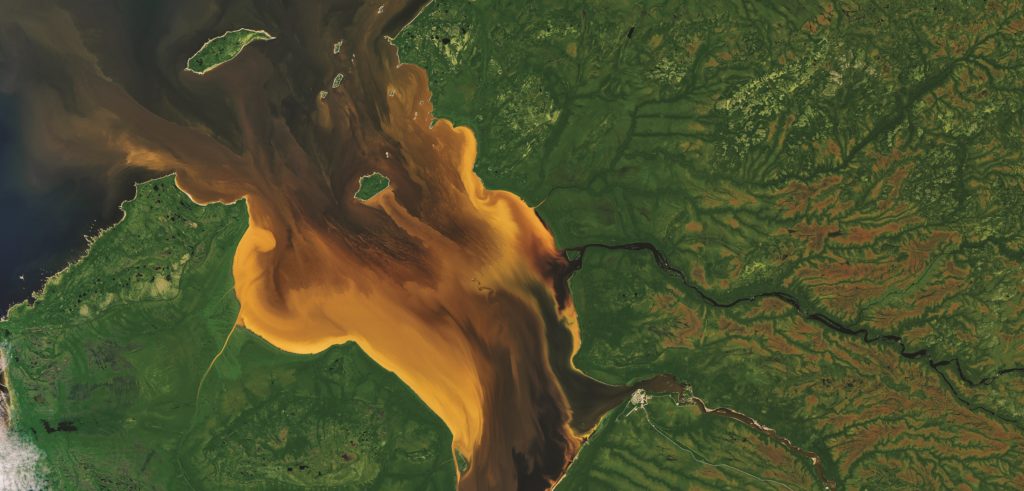NASA
Swirling white clouds, deep blue oceans and multicolored landscapes bring to life the pages of NASA’s new 168-page book “Earth,” a collection of dramatic images captured by Earth-observing satellites. The book is available now in hardcover and ebook, and online with interactive features.
From a lava field in Iceland to the icy Patagonian landscape of South America, the 69 images in “Earth” present our home planet’s atmosphere, water, land, and ice and snow with short explanations of the science behind each image.
“The spectacular images in this book remind us of the majestic beauty of our world,” said Lawrence Friedl, program director for the Applied Sciences Program in NASA’s Science Mission Directorate, Earth Science Division in Washington. “We hope these images inspire everyone to explore, understand, and appreciate the planet we call home.”
NASA brings together technology, science, and unique global Earth observations to provide societal benefits and strengthen our nation. The agency makes its Earth observations freely and openly available to those seeking solutions to important global issues such as changing freshwater availability, food security and human health.

The rivers that flow into Rupert Bay in northern Quebec carry water stained brown with natural chemicals found in plants, as shown in this satellite view captured by Landsat 8 on July 30, 2016. This is one of the 69 images from space in the new book, “Earth.”
Credits: NASA
From the Foreword by Michael Carlowicz:
From its origins, NASA has studied our planet in novel ways, using ingenious tools to study physical processes at work—from beneath the crust to the edge of the atmosphere. We look at it in macrocosm and microcosm, from the flow of one mountain stream to the flow of jet streams. Most of all, we look at Earth as a system, examining the cycles and processes—the water cycle, the carbon cycle, ocean circulation, the movement of heat—that interact and influence each other in a complex, dynamic dance across seasons and decades.
For all of the dynamism and detail we can observe from orbit, sometimes it is worth stepping back and simply admiring Earth. It is a beautiful, awe-inspiring place, and it is the only world most of us will ever know.
PDF readers:

